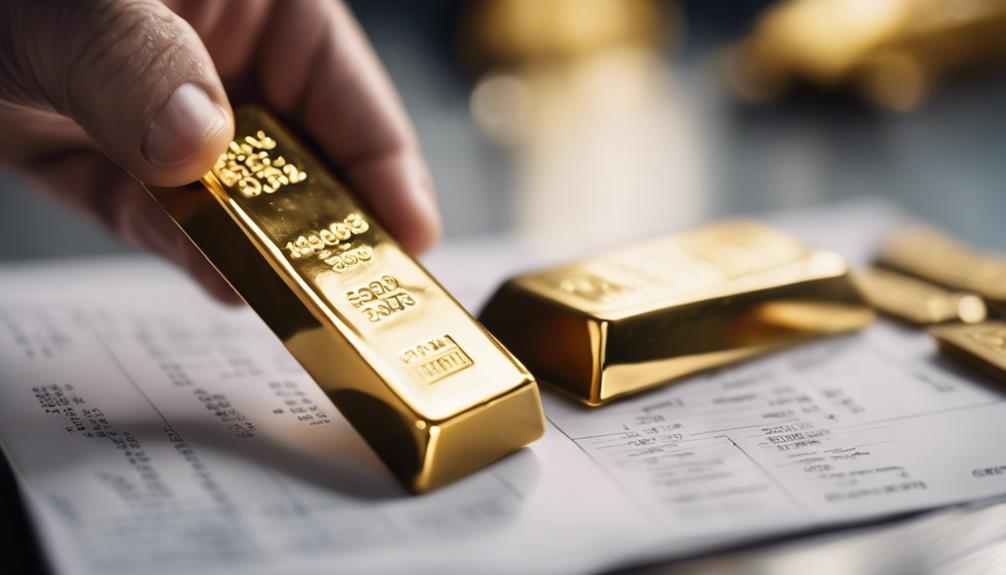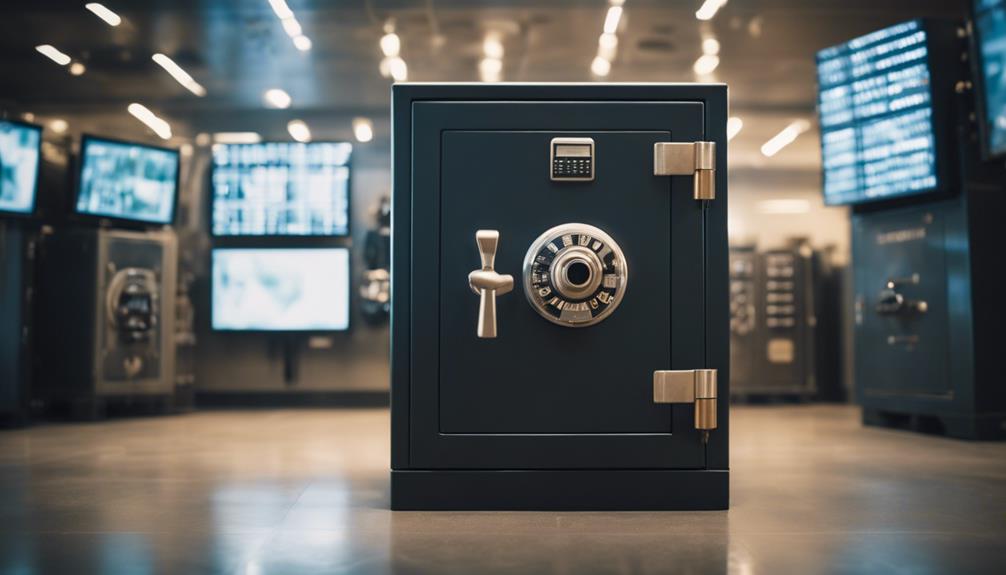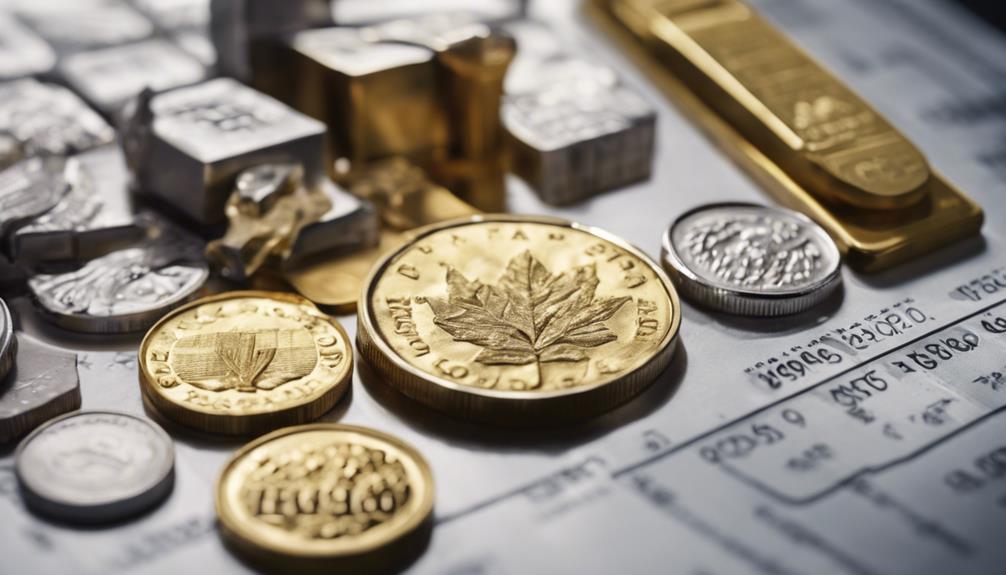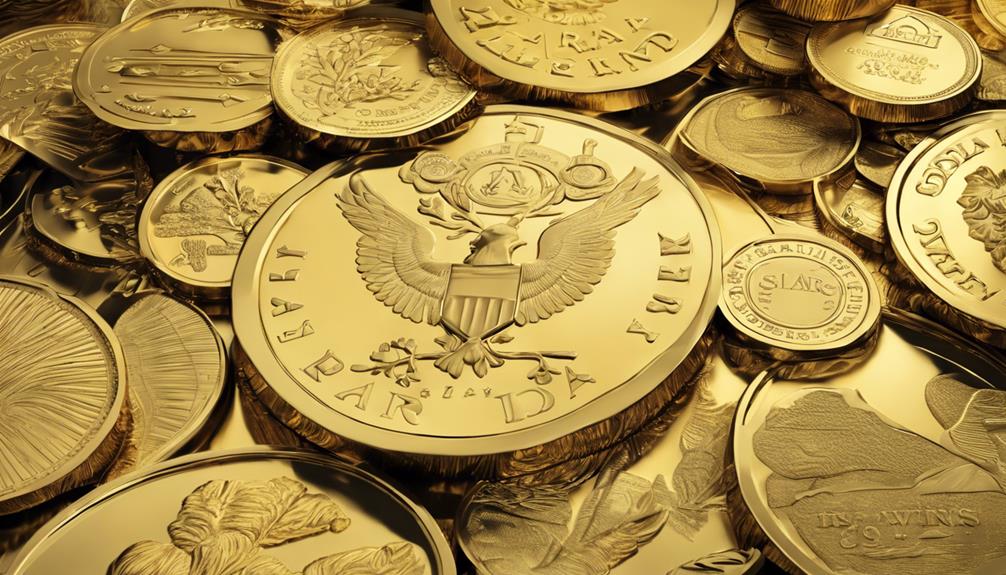Adding gold to your Individual Retirement Account (IRA) can help diversify and strengthen your investment portfolio. To get started, you’ll need to find a trustworthy gold IRA dealer and an IRS-compliant custodian. After registering the account, completing the necessary paperwork, and funding it, you can then purchase physical gold assets. There are various ways to fund your account, such as contributions, rollovers, or transfers, each with their own benefits. Make sure to select approved precious metals that meet IRS purity standards to ensure compliance. Choose an experienced custodian that offers secure storage facilities. By following IRS regulations, you can maintain the tax-advantaged status of your Gold IRA. Those looking to enhance their retirement investments with this valuable asset can take advantage of the benefits that come with it. Additionally, it’s important to regularly review your portfolio to ensure your gold holdings align with your long-term financial goals and risk tolerance. A proper gold investment retirement account setup involves thorough research, understanding IRS guidelines, and working with reputable professionals to safeguard your assets. With the right approach, you can enjoy both the stability of gold and the tax advantages of a well-structured Gold IRA.
Key Takeaways
- Locate a reputable gold IRA dealer for guidance.
- Choose an IRS-compliant self-directed IRA custodian.
- Complete necessary paperwork to register your gold IRA account.
- Fund your account before purchasing physical gold assets.
- Adhere to IRS guidelines on annual contribution limits.
Benefits of Adding Gold to IRA
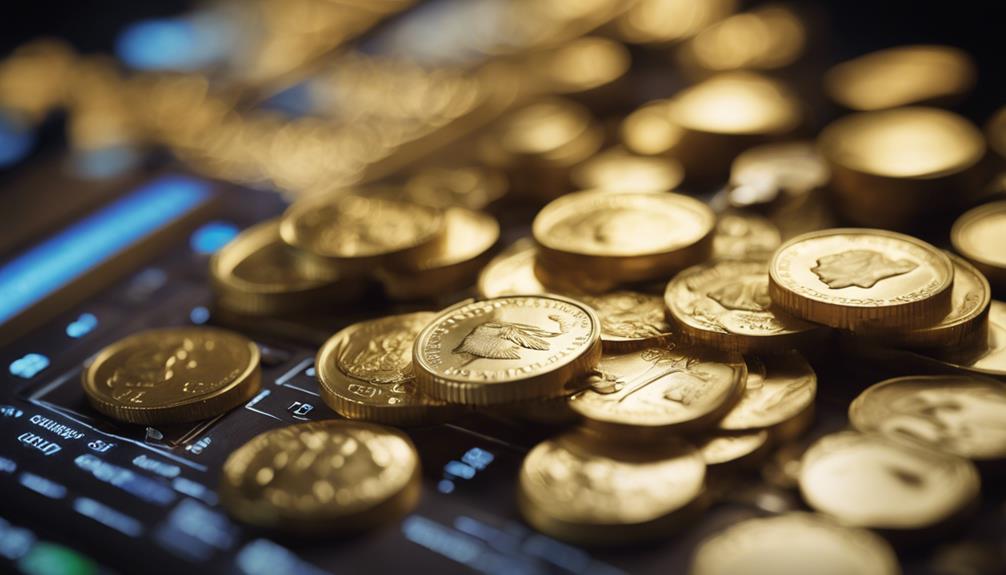
Adding gold to an Individual Retirement Account (IRA) offers a range of benefits that can enhance portfolio diversification and resilience. Gold, known for its stability and value retention over time, serves as a valuable addition to retirement investments. By incorporating gold into an IRA, investors can mitigate risk through diversification, balancing out the volatility of traditional stocks and bonds. Additionally, gold has historically acted as a hedge against inflation, safeguarding the purchasing power of retirement savings in the face of economic uncertainty.
Including precious metals like gold in an IRA not only bolsters portfolio stability but also provides the potential for long-term growth. This strategic investment move can shield retirement funds from market fluctuations and economic downturns, offering a safeguard against instability. By considering gold as part of their retirement investment strategy, individuals can reinforce the resilience of their portfolios and work towards securing a financially sound future.
Steps to Roll Over to Gold IRA
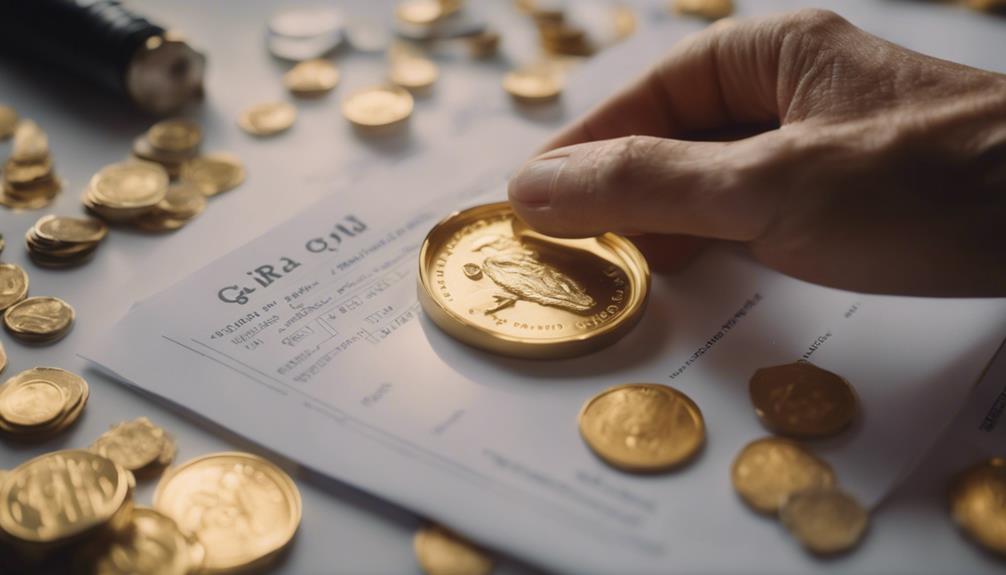
To initiate the process of rolling over to a Gold IRA, the first step is to locate a reputable gold IRA dealer specialized in facilitating rollovers from traditional retirement accounts.
It is important to choose a self-directed IRA custodian capable of holding physical gold in compliance with IRS regulations. Once you have identified a suitable custodian, register your gold IRA account and complete the necessary paperwork to kickstart the rollover process smoothly.
Remember to fund your gold IRA before purchasing any physical gold assets to guarantee a seamless switch. Additionally, it is essential to adhere to IRS guidelines regarding annual contribution limits when adding gold to your individual retirement account.
Funding Your Gold IRA Account

Funding a Gold IRA account can be achieved through various methods such as contributions, rollovers, or transfers from existing retirement accounts or other IRAs. When considering contributions, it's vital to be mindful of the IRS regulations that set annual limits. For 2023, the limit stands at $6,500, increasing to $7,000 for 2024, with an additional catch-up contribution of $1,000 for those aged 50 and over.
Rollovers from traditional IRAs or 401(k) accounts into a Gold IRA can offer a tax-efficient way to fund the account without penalties. Similarly, transfers from one IRA to another, specifically to a Gold IRA, can be completed within 60 days without tax consequences.
However, funding a Gold IRA with physical gold purchases requires adherence to IRS guidelines concerning approved metals, purity standards, and secure storage in authorized depositories. Understanding these funding options and regulations is important for a successful Gold IRA investment strategy.
Choosing a Gold IRA Custodian

When establishing a Gold IRA, selecting an experienced and IRS-approved custodian is essential for safeguarding and managing the physical gold assets within the account. A Gold IRA custodian, also known as a trustee, plays a vital role in ensuring compliance with IRS regulations regarding precious metals held in retirement accounts. These custodians offer secure storage facilities specifically designed for holding gold and assist in various administrative tasks related to the IRA, such as facilitating purchases and sales of gold investments.
Choosing the right custodian is paramount to the success of your Gold IRA. It is imperative to take into account factors such as fees, level of experience in handling precious metals, compliance with IRS guidelines, and the overall trustworthiness of the custodian. Comparing different custodians based on these criteria can help you make an informed decision that aligns with your financial goals and safeguards your gold investments effectively.
IRS Guidelines for Gold IRA

The compliance with IRS guidelines is crucial for maintaining the integrity and tax-advantaged status of a Gold IRA. To guarantee compliance and maximize the benefits of a Gold IRA, individuals should follow these key IRS guidelines:
- Approved Precious Metals: The IRS permits self-directed IRA holders to invest in physical forms of gold, silver, platinum, or palladium for their Gold IRA.
- Storage Requirements: Gold in a Gold IRA must meet IRS purity standards and be stored at an IRS-approved depository to retain its tax-advantaged status.
- Segregation of Assets: Physical gold held in a Gold IRA must be kept separate from personal assets to uphold the account's tax benefits and integrity.
- Inclusion of Securities: Precious metals-related securities can also be included in a Gold IRA if they meet IRS criteria for qualification, offering investors additional diversification opportunities for their retirement savings.
Frequently Asked Questions
How Do I Add Gold to My Ira?
To add gold to your IRA, you must open a self-directed IRA account that permits precious metal investments. Once established, you can acquire IRS-approved physical gold, such as bullion or coins, for your account.
Storage in an IRS-approved depository is essential to comply with regulations. Adding gold to your IRA offers diversification and shields against economic uncertainty. It is important to seek advice from a financial advisor to navigate the rules and regulations effectively.
Can I Add Gold to My 401k?
While adding physical gold to a 401(k) is typically not permitted by traditional plans, investors can explore the option of rolling over their 401(k) into a self-directed Gold IRA to incorporate gold into their retirement portfolio.
This process allows individuals to hold physical precious metal coins or bars within the IRA for retirement savings purposes.
For guidance on the rollover process, individuals can contact American Bullion at 1-800-326-9598.
Can You Add Money to an Individual Retirement Account?
Yes, individuals can add money to an Individual Retirement Account (IRA) up to the contribution limits established by the IRS. Contributions to a Traditional IRA may be tax-deductible, while Roth IRA contributions are made with after-tax funds. These contributions provide individuals with an opportunity to save for retirement and enjoy potential tax benefits.
Methods of adding money to an IRA include regular contributions, rollovers, or transfers from other retirement accounts.
Can I Hold Physical Gold in My Ira?
Physical gold can be held in a self-directed IRA, meeting specific purity standards set by the IRS. Approved gold bullion or coins are essential for tax advantages. Storage must occur at an IRS-approved depository to avoid penalties.
This tangible asset can act as a hedge against economic uncertainty, providing investors with a secure option within their IRA. Gold held in an IRA must adhere to IRS regulations for proper management and storage.
Conclusion
To sum up, adding gold to your individual retirement account can provide diversification and protection against economic uncertainties.
While some may argue that gold prices can be volatile, historical data shows that gold has maintained its value over time.
By following the steps outlined in this article and adhering to IRS guidelines, you can successfully incorporate gold into your retirement portfolio for added stability and potential growth.

